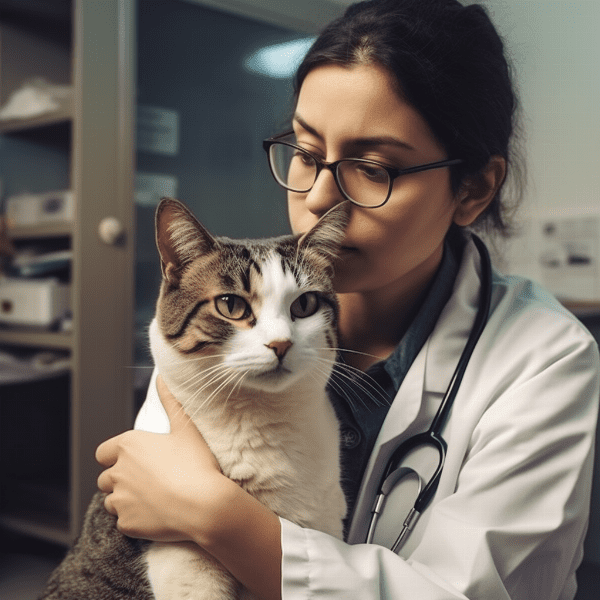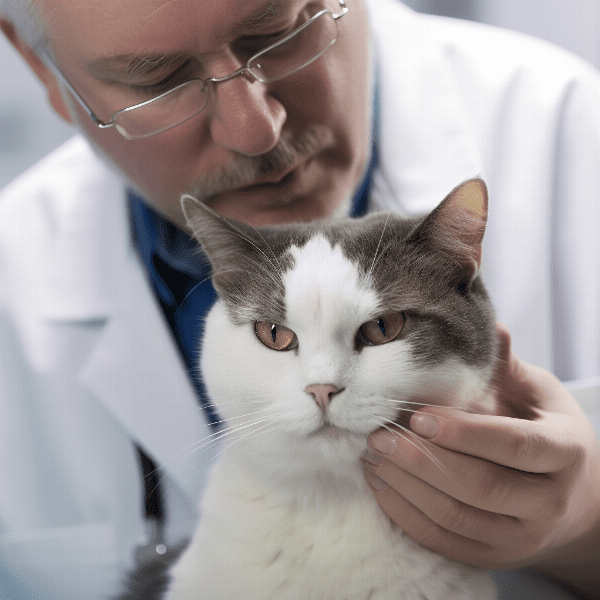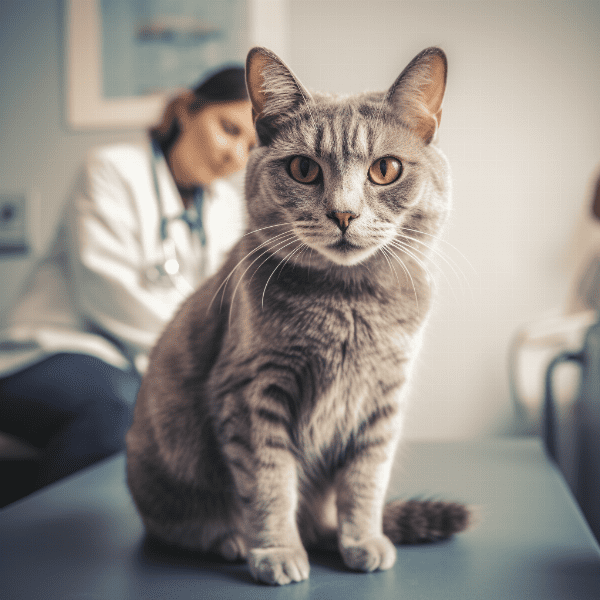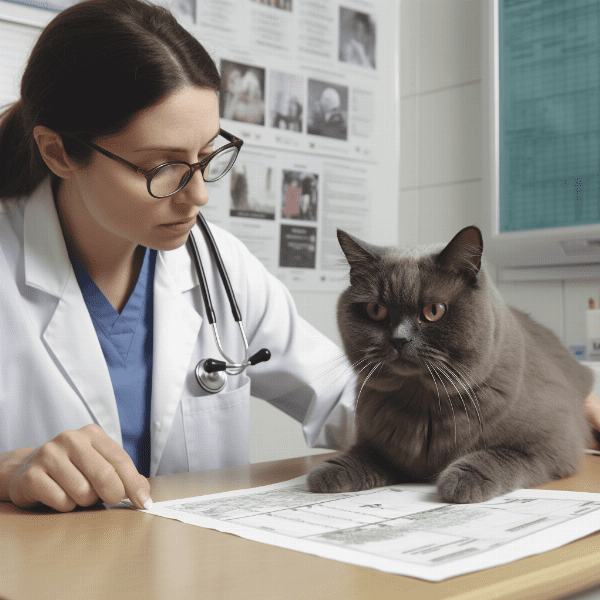Table of Contents
- Understanding the Prevalence of Cancer in Cats
- Common Types of Cancer in Cats
- Early Warning Signs to Look Out For
- Diagnostic Tests for Cat Cancer
- Treatment Options for Feline Cancer
- The Importance of Early Detection and Treatment
- Coping with a Cancer Diagnosis in Your Cat
- Preventative Measures to Reduce Your Cat’s Risk of Cancer
- Supportive Care for Cats with Cancer
- When to Consult with Your Vet about Cancer Concerns
Understanding the Prevalence of Cancer in Cats
Cancer is a serious disease that affects both humans and animals. In recent years, there has been an increase in the number of cats diagnosed with cancer. This has raised concerns among cat owners and veterinarians alike. In this section, we will explore the prevalence of cancer in cats, as well as the risk factors associated with the disease.
The Scope of the Problem
According to the American Veterinary Medical Association, cancer is the leading cause of death in cats over ten years of age. In fact, one out of every five cats will develop some form of cancer in their lifetime. While cancer can occur in cats of any age, it is more common in older cats.
Risk Factors for Cancer in Cats
There are several risk factors associated with the development of cancer in cats. These include:
- Age: As mentioned earlier, older cats are more likely to develop cancer.
- Genetics: Certain breeds of cats are more prone to specific types of cancer.
- Environmental factors: Exposure to environmental toxins such as tobacco smoke, pesticides, and other chemicals can increase a cat’s risk of cancer.
- Diet: A poor diet or one lacking essential nutrients can contribute to the development of cancer in cats.
Types of Cancer in Cats
Cats can develop various types of cancer, just like humans. Some of the most common types of cancer in cats include:
- Lymphoma: This type of cancer affects the lymphatic system and is the most common type of cancer in cats.
- Skin cancer: Cats with light-colored fur are more prone to developing skin cancer, particularly on the ears and nose.
- Breast cancer: Female cats that have not been spayed are at higher risk of developing breast cancer.
- Oral cancer: Cats that have been exposed to tobacco smoke are more likely to develop oral cancer.

Common Types of Cancer in Cats
Cancer is a complex disease that can affect any part of a cat’s body. While cats can develop many types of cancer, some are more common than others. In this section, we will discuss the most common types of cancer in cats, their symptoms, and how they are diagnosed.
Lymphoma
Lymphoma is the most common type of cancer in cats. It affects the lymphatic system, which is part of the immune system. Cats with lymphoma may experience swollen lymph nodes, weight loss, and decreased appetite. Diagnosis is typically made through a biopsy of the affected lymph node.
Skin Cancer
Skin cancer is another common type of cancer in cats. Cats with light-colored fur are more prone to developing skin cancer, particularly on the ears and nose. Symptoms may include scaly or crusty patches of skin, ulcers, or growths. Diagnosis is typically made through a biopsy of the affected area.
Breast Cancer
Breast cancer is more commonly seen in female cats that have not been spayed. Symptoms may include a lump or mass in the breast tissue, discharge from the nipples, or swelling. Diagnosis is typically made through a biopsy of the affected tissue.
Oral Cancer
Cats that have been exposed to tobacco smoke are more likely to develop oral cancer. Symptoms may include drooling, bad breath, difficulty eating or swallowing, or the presence of a mass or growth in the mouth. Diagnosis is typically made through a biopsy of the affected tissue.
Bone Cancer
Bone cancer is less common in cats than in dogs, but it can still occur. Symptoms may include limping, swelling, or a mass on a bone. Diagnosis is typically made through a combination of physical examination, X-rays, and a biopsy of the affected bone.

Early Warning Signs to Look Out For
Early detection is critical in the successful treatment of cancer in cats. Knowing the early warning signs of cancer can help cat owners identify the disease early on and seek prompt veterinary care. In this section, we will discuss the most common early warning Signs of cancer in cats.
Changes in Appetite and Weight Loss
Cats with cancer often experience a loss of appetite, which can lead to weight loss. However, some cats with cancer may actually experience an increase in appetite. Any significant change in your cat’s eating habits should be investigated by a veterinarian.
Lumps and Bumps
Lumps and bumps on your cat’s body can be a sign of cancer. These can appear anywhere on the body and may be hard or soft to the touch. If you notice any new lumps or bumps on your cat, have them evaluated by a veterinarian.
Difficulty Breathing
Cats with lung cancer may experience difficulty breathing or rapid breathing. This can be a sign of other respiratory problems as well, so it’s important to have your cat evaluated by a veterinarian if you notice any changes in their breathing.
Oral Symptoms
Cats with oral cancer may experience difficulty eating or swallowing, drooling, or bad breath. They may also have visible growths or sores in the mouth. Any changes in your cat’s oral health should be evaluated by a veterinarian.
Changes in Bathroom Habits
Cats with cancer may experience changes in their bathroom habits. They may urinate more or less frequently than usual, or they may experience constipation or diarrhea. These changes can be a sign of many different health problems, so it’s important to have your cat evaluated by a veterinarian.
In the next section, we will discuss the diagnostic tests used to diagnose cancer in cats.

Diagnostic Tests for Cat Cancer
If you suspect that your cat may have cancer, it’s important to seek veterinary care promptly. The earlier cancer is detected, the better the chances for successful treatment. In this section, we will discuss the diagnostic tests used to diagnose cancer in cats.
Physical Examination
The first step in diagnosing cancer in cats is a thorough physical examination. During the exam, the veterinarian will look for any lumps or bumps, as well as any changes in your cat’s behavior or physical condition.
Blood Tests
Blood tests can help identify changes in your cat’s blood chemistry that may be associated with cancer. These tests can also help rule out other health problems that may be causing your cat’s symptoms.
Imaging Tests
Imaging tests such as X-rays, ultrasound, and CT scans can help identify the location and extent of a tumor. These tests can also help identify any metastasis, or spread of cancer to other parts of the body.
Biopsy
A biopsy is a procedure in which a small sample of tissue is taken from the affected area and examined under a microscope. Biopsies can help determine the type of cancer present, as well as the best course of treatment.
Fine Needle Aspiration
Fine needle aspiration is a less invasive procedure in which a small needle is used to extract a sample of cells from the affected area. This procedure is often used to diagnose lymphoma and other types of cancer.
Endoscopy
Endoscopy is a procedure in which a flexible tube with a camera is used to examine the inside of the body. This procedure is often used to diagnose gastrointestinal cancers.
By utilizing these diagnostic tests, veterinarians can accurately diagnose cancer in cats and develop a personalized treatment plan for each individual cat. In the next section, we will discuss the treatment options available for feline cancer.

Treatment Options for Feline Cancer
The treatment for feline cancer depends on several factors, including the type of cancer, the stage of the disease, and the cat’s overall health. In this section, we will discuss the treatment options available for feline cancer.
Surgery
Surgery is often used to remove cancerous tumors in cats. This may be the only treatment needed for early-stage cancers or may be used in combination with other treatments for more advanced cancers. The goal of surgery is to remove as much of the cancerous tissue as possible.
Radiation Therapy
Radiation therapy uses high-energy radiation to kill cancer cells. This treatment is often used in combination with surgery or chemotherapy to treat cancers that have spread to other parts of the body. Radiation therapy may be given externally or internally, depending on the type and location of the cancer.
Chemotherapy
Chemotherapy uses drugs to kill cancer cells. This treatment is often used to treat cancers that have spread to other parts of the body. Chemotherapy can have side effects, including vomiting, diarrhea, and hair loss, but these are usually temporary and can be managed with medication.
Immunotherapy
Immunotherapy is a newer treatment option for feline cancer. It works by stimulating the immune system to attack cancer cells. This treatment is often used in combination with other treatments for advanced cancers.
Palliative Care
It’s important to work closely with your veterinarian to determine the best course of treatment for your cat. In some cases, a combination of treatments may be used to provide the best possible outcome. In the next section, we will discuss the importance of early detection and treatment of feline cancer.

The Importance of Early Detection and Treatment
Early detection and treatment of feline cancer can make a significant difference in the outcome of the disease. In this section, we will discuss the importance of early detection and treatment of feline cancer.
Better Treatment Outcomes
The earlier cancer is detected, the better the chances for successful treatment. When cancer is caught early, it is often easier to treat and has a better prognosis. Early detection can also help prevent the cancer from spreading to other parts of the body.
Improved Quality of Life
Early detection and treatment can also improve the cat’s quality of life. When cancer is caught early, the cat can receive prompt treatment and management of symptoms. This can help reduce pain and discomfort associated with the disease.
Reduced Treatment Costs
Treating cancer can be expensive, especially if the cancer has progressed to an advanced stage. Early detection and treatment can help reduce the cost of treatment by allowing for less invasive treatments and fewer visits to the veterinarian.
Emotional Benefits
Cancer can be a difficult diagnosis to receive, both for the cat and the owner. Early detection and treatment can help alleviate some of the emotional stress associated with the disease. By catching cancer early, owners can take a proactive approach to their cat’s care and feel more in control of the situation.
In conclusion, early detection and treatment of feline cancer can make a significant difference in the outcome of the disease. Cat owners should be aware of the early warning signs of cancer and seek prompt veterinary care if they suspect their cat may have the disease. By working closely with their veterinarian and taking a proactive approach to their cat’s care, owners can help improve the chances for successful treatment and management of the disease.

Coping with a Cancer Diagnosis in Your Cat
Receiving a cancer diagnosis in your cat can be a difficult and emotional experience. In this section, we will discuss how to cope with a cancer diagnosis in your cat and provide support for both you and your furry friend.
Understand the Diagnosis
The first step in coping with a cancer diagnosis in your cat is to understand the diagnosis. Talk to your veterinarian and ask questions about the type of cancer, the stage of the disease, and the treatment options available. This will help you make informed decisions about your cat’s care.
Seek Support
Receiving a cancer diagnosis in your cat can be emotionally draining. It’s important to seek support from friends, family, and other cat owners who have gone through a similar experience. Support groups and online forums can also provide a sense of community and understanding.
Make a Plan
Once you have a better understanding of your cat’s diagnosis, work with your veterinarian to create a plan for treatment and care. This may include surgery, radiation therapy, chemotherapy, or palliative care. Having a plan in place can help alleviate some of the stress and uncertainty associated with the diagnosis.
Focus on Quality of Life
While treating the cancer is important, it’s also important to focus on your cat’s quality of life. This may include providing pain management, nutritional support, and other treatments designed to keep your cat comfortable and happy.
Take Care of Yourself
Caring for a cat with cancer can be physically and emotionally demanding. It’s important to take care of yourself as well. This may include seeking support from friends and family, practicing self-care, and taking breaks when needed.
In conclusion, coping with a cancer diagnosis in your cat can be difficult, but there are resources and support available to help you through the process. By understanding the diagnosis, seeking support, making a plan, focusing on quality of life, and taking care of yourself, you can provide the best possible care for your furry friend.

Preventative Measures to Reduce Your Cat’s Risk of Cancer
While there is no surefire way to prevent cancer in cats, there are some preventative measures that can help reduce the risk of the disease. In this section, we will discuss some of these preventative measures.
Spay or Neuter Your Cat
Spaying or neutering your cat can significantly reduce their risk of developing certain types of cancer, including breast and reproductive system cancers.
Keep Your Cat Indoors
Outdoor cats are exposed to a variety of environmental factors that can increase their risk of developing cancer. Keeping your cat indoors can help reduce their exposure to these factors.
Provide a Healthy Diet
A healthy diet can help support your cat’s overall health and reduce their risk of cancer. Consult with your veterinarian to develop a diet plan that meets your cat’s individual nutritional needs.
Avoid Exposure to Secondhand Smoke
Exposure to secondhand smoke can increase a cat’s risk of developing cancer, particularly oral cancer. Avoid smoking around your cat or providing a smoke-free environment for your furry friend.
Regular Veterinary Care
Regular veterinary care, including annual wellness exams, can help detect cancer early on and provide prompt treatment. Be sure to schedule regular check-ups for your cat and report any changes in their behavior or physical condition to your veterinarian.
By taking these preventative measures, cat owners can help reduce their cat’s risk of developing cancer. While there is no guarantee against the disease, these measures can help promote overall health and wellness in our feline friends.

Supportive Care for Cats with Cancer
Supportive care is an important aspect of caring for cats with cancer. In addition to medical treatments, supportive care can help improve the cat’s quality of life and manage symptoms associated with the disease. In this section, we will discuss some of the supportive care options available for cats with cancer.
Pain Management
Pain management is an important aspect of caring for cats with cancer. Medications and other treatments can help manage pain associated with the disease, improving the cat’s comfort and overall quality of life.
Nutritional Support
Cats with cancer may experience changes in their appetite or ability to eat, which can lead to malnutrition. Nutritional support, including specialized diets and supplements, can help ensure that the cat receives the proper nutrition they need to maintain their health.
Hydration Support
Cats with cancer may experience dehydration due to a variety of factors, including changes in their appetite, vomiting, or diarrhea. Hydration support, including subcutaneous fluids or other treatments, can help ensure that the cat remains hydrated and comfortable.
Environmental Modifications
Modifications to the cat’s environment can help improve their comfort and quality of life. This may include providing soft bedding, ramps or steps to help them access elevated surfaces, and litter boxes that are easy to access.
Emotional Support
Caring for a cat with cancer can be emotionally taxing for owners. Emotional support, including counseling or support groups, can help owners cope with the stress and uncertainty associated with the disease.
Hospice Care
In some cases, the goal of treatment may be to manage symptoms and provide comfort for the cat. Hospice care may include pain management, nutritional support, and other treatments designed to keep the cat comfortable and happy.
In conclusion, supportive care is an important aspect of caring for cats with cancer. By managing pain, providing nutritional and hydration support, making environmental modifications, and seeking emotional support, owners can help improve the quality of life for their furry friends. It’s important to work closely with your veterinarian to determine the best course of treatment and supportive care for your cat.

When to Consult with Your Vet about Cancer Concerns
Cancer is a serious disease that can have a significant impact on the health and well-being of our feline friends. In this section, we will discuss when to consult with your veterinarian about cancer concerns.
Early Warning Signs
If you notice any early warning signs of cancer in your cat, such as lumps or bumps, changes in appetite or weight loss, or changes in behavior, it’s important to consult with your veterinarian promptly. Early detection and treatment can make a significant difference in the outcome of the disease.
Regular Wellness Exams
Regular wellness exams are an important part of maintaining your cat’s health and well-being. During these exams, your veterinarian will perform a physical examination and may recommend additional testing if any concerns are identified.
Age and Breed Considerations
Certain breeds of cats may be more prone to certain types of cancer. Additionally, as cats age, their risk of developing cancer increases. If your cat is at an increased risk due to breed or age, it’s important to consult with your veterinarian about preventative measures and regular monitoring.
Previous Cancer Diagnosis
If your cat has previously been diagnosed with cancer, it’s important to stay vigilant and monitor for any signs of recurrence. Regular check-ups with your veterinarian can help detect any changes early on and provide prompt treatment.
Unexplained Symptoms
If your cat is experiencing unexplained symptoms, such as vomiting or diarrhea, it’s important to consult with your veterinarian. While these symptoms may not be related to cancer, they could be indicative of other health problems that require prompt attention.
In conclusion, consulting with your veterinarian about cancer concerns is an important part of maintaining your cat’s health and well-being. By being aware of the early warning signs, scheduling regular wellness exams, considering age and breed, monitoring for recurrence, and seeking attention for unexplained symptoms, cat owners can help promote the best possible outcomes for their furry friends.




